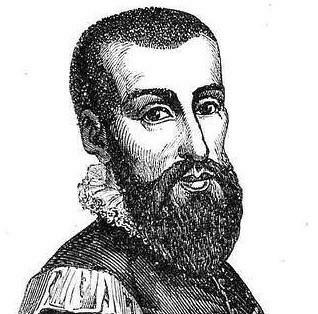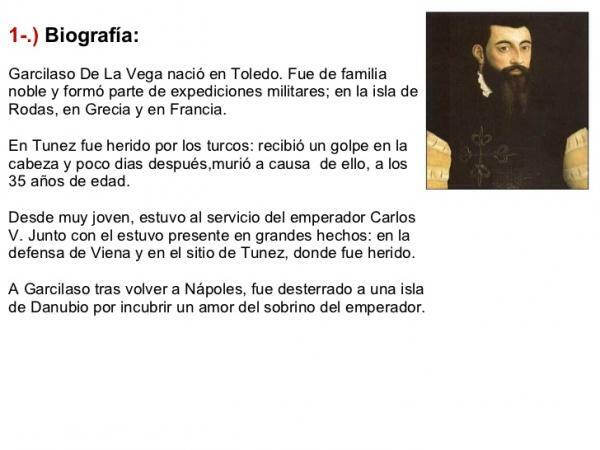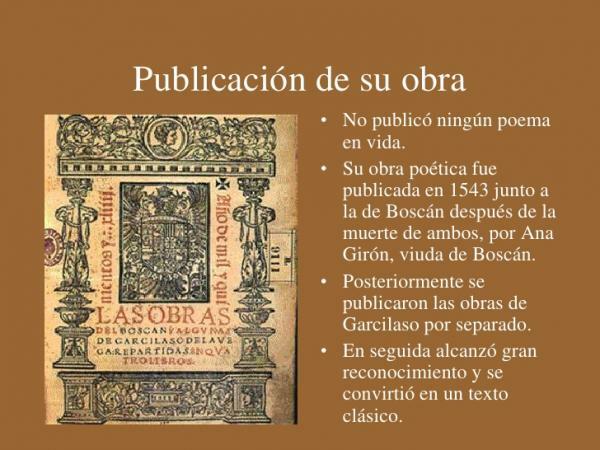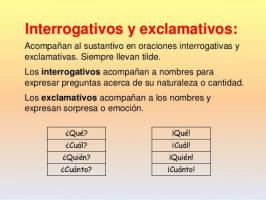Garcilaso de la Vega: biography and works - Summary

In the lesson of a PROFESSOR that starts we will know a brief summary on the biography and works of Garcilaso de la Vega, one of the most unique authors of the Spanish Golden Age. This Renaissance poet is one of the least known of those who appeared in the 16th century in the Iberian Peninsula. And it is that, curiously, he died quite young, and he never saw a single of his works published in his lifetime. However, he never stopped writing and working until the day of his death in his last ten years.
Be that as it may, it is important to know the poetic work of Garcilaso de la Vega, since he was a great author who is not always remembered when talking about the Golden age and names such as Cervantes, Quevedo, Lope de Vega or Calderón de la Barca, among others, appear.
Index
- Biography of Garcilaso de la Vega
- Garcilaso de la Vega and his literary works
- Most important works of Garcilaso de la Vega
Biography of Garcilaso de la Vega.
We begin with a small summary of the biography of Garcilaso de la Vega.
Born in Toledo, it is believed that in 1501, he spent a good part of his life outside the Iberian territory for his military and courteous profession.Belonging to an influential Castilian family, he entered the Court of Castile in 1510 and was a participant and witness of multiple political and courtly intrigues. In fact, he took part in numerous battles under the orders of King Carlos I and he was made a Knight of Santiago in 1523 after participating in the Rodas expedition with Juan Boscán, a good friend who would be an important figure in his life.
Together with Carlos I he moved to Bologna in 1530, when he was crowned emperor. There he would remain until he is banished to the island of Schut in the Danube, for personal reasons. He then he would land in Naples and be transferred to Nice after suffering a death wound in combat in an assault on the fortress of Muy, in French Provence, where he would pass away in 1536 without even reaching 40 years of age.

Image: Slideshare
Garcilaso de la Vega and his literary works.
If Garcilaso de la Vega is not more famous and recognized today, it is undoubtedly due to the scarcity of his poetic work, since he died very young and with just 9 years of literary career. Furthermore, because it was not his main profession, it was never published either.
As we have said before, Juan Boscán would be a very important figure in the life and work of Garcilaso. The great poet died, it was he who published de la Vega in Barcelona in 1543 with the title of The works of Boscán with some of Garcilaso de la Verga.
Unfortunately, and although it is considered that this work opened in the Hispanic literary Renaissance in the middle of the 16th century, there is very little that has come down to us from Garcilaso de la Vega, hence he is not as considered as other contemporary authors. Scholars consider that it is highly probable that prior to this one, de la Vega would have written traditional poetry. In fact, he may have been a well-known and well-known poet in his day.
Garcilaso and his friend Boscán they adapted the hendecasyllable to Castilian metric, achieving a fairly accurate accentuation for his native language. They used the Neoplatonic tone adopted from the Renaissance of the Italian country.
Most important works of Garcilaso de la Vega.
Although little has come of the works of Garcilaso de la Vega, it is observed in what we have his passion for a Portuguese lady who died in 1533 and whose name was Isabel freyre. His death affected her greatly, and this is evident in the evolution of his work.
In total, Garcilaso conserves a total of 40 sonnets and 3 eclogues in which a dilemma between reason and passion is observed, and a great influence of the poet Petrarca, using the natural landscape to relate his feelings, using a rich lexicon.
In addition, we also find in his work 2 elegies, 3 classical-inspired Latin odes in Virgilio and Horacio, 1 epistle to his friend Boscán, 5 songs, 8 Spanish couplets and 1 ode in lire.
They can also be elucidated various eras in Garcilaso's poetry:
- First influenced by his stay in Naples, where Petrarchist features were not yet denoted in his verses,
- Then after his passage through Italy, when it is observed that the Italian lyric has a lot of weight in his writings.
He learned from the Castilian humanists of the Castilian court, but also from the classicists after discovering the ancient poets, such as Ovid, Horacio or Virgilio. All this made him a reference in his time for Renaissance poets.

Image: Slideshare
If you want to read more articles similar to Garcilaso de la Vega: biography and works - Summary, we recommend that you enter our category of History of Literature.



